Media | Articles
Ford’s 1965–68 Galaxie Was Quieter Than a Rolls. Its Values Are Anything but Subdued
By 1965, Ford was pushing its Total Performance concept in every vehicle from the fuel-sipping Falcon to the range-topping Thunderbird. While the tie-in to Ford’s motorsports efforts was obvious, Total Performance also included the notion of durability, practicality, value, and luxury. Perhaps there was no better example of the breed than the full-size Ford Galaxie for 1965, and its premium LTD trim level for those seeking performance in its totality (as it were). The sales brochure suggested these Galaxies were “the most changed cars you’ve seen in a decade.”
That’s not marketing hyperbole, as a new 3-link rear suspension utilized a Panhard bar and replaced the clumsy leaf springs of the era with a modern coil setup. The Galaxie’s new 15-inch wheels with lower profile tires were harder to find outside of luxury cars of the era. But what made the 1965-68 Ford Galaxie so special was a body-on-frame design that eschewed the notion that stiffer is always better. Opting for a strategic flexibility program that implemented torque boxes and rubber body mounts all the way back in 1965 was certainly something to talk about. It was another example of Total Performance, especially when it came to reducing NVH levels.
And all the hard work from Ford’s designers and engineers deserved an advertising campaign that proved the point. Working with trusted advertising parter J. Walter Thompson, the hardtop 1965 Galaxie 500 LTD became famous for being quieter than a Rolls-Royce, mostly because of the revised suspension and radical frame. The design was unique in the Ford lineup, as even the Lincoln Continental still used leaf springs at the rear, with a unitized chassis lacking the LTD’s balance of stiffness, flexibility, and NVH reduction technology.



The new 1965 Galaxie sold as well as it rode, besting the prior year’s sales by over 55,000 units (978,429 in total). There were six body styles (pillared sedan/coupe, hardtop sedan/coupe, convertible, station wagon), and trim levels offering luxury (LTD), higher performance (XL), or posh practicality (Country Squire Wagon). A wide range of engines, from a new 240-cid inline six (a descendent of Ford’s legendary 300 inline six truck motor) to the rare 427-cid V-8 (available with a four-barrel carb or dual quads), made the Galaxie a full-size vehicle for every taste and budget. But 1965 was only the start of something special, as sales skyrocketed to over one million Galaxies (1,034,930) the following year.



The 1966 Galaxie was restyled with softer contours that belied the hard-nosed performance with the newly available 428-cid Thunderbird V-8 with 345 horsepower. Dubbed the “7-Litre” Galaxie, it slotted between the relatively tamer 390 (315 horsepower) and the radical 427 (425 horsepower) V-8 engines. The 7-Litre trim could be had with the fire-breathing 427, but these days enthusiasts typically reference the 428 as the 7-Litre or call out the 427 directly.
Marketplace
Buy and sell classics with confidence
Values for the second-generation Galaxie do vary somewhat year to year, but the selection of ’66 Galaxie trims below do afford a representative sample. Regardless of trim, 427-equipped cars occupy the top spots, with less-powerful engines rendering the cars they’re in considerably more affordable. While available in every body style, the 428-powered 7-Litre hardtop coupes in #2 condition are now valued at $60,000, much closer to the 390 ($34,300) compared to the 427 ($141,000). Across the board, though, even in a flatter market, values are stable for entry-level Galaxies and on the upswing for the more powerful examples. Four-speed cars command a 10 percent premium, and, if you’re seeking the looks of a Galaxie at a significant discount, six-cylinder cars tend to be worth about 20 percent less than the lowest value V-8.

The Galaxie is a popular 1960s choice across all ages. Insurance quotes sought from Gen X owners are up three percentage points over the last five years, and five percentage points in the same period among both millennials and Gen Z. Between the interest among younger enthusiasts and the sheer number of Galaxies made, we can expect to see them being enjoyed for years to come.


The 1967 Galaxie received even softer styling than the 1966 model, and all the same engines were available (but lacking the 7-Litre moniker). A revised dashboard sported an integrated “Stereo Sonic” tape player where the 1966 had it mounted below the dashboard. Mandated safety features also applied to the Galaxie, from a padded horn button with an energy-absorbing steering column, to a dual bore master cylinder. For 1968, the final year of this body style, Ford gave the Galaxie new front and rear fascias, side marker lights, and horizontally arranged headlights. Concealed headlights were available on the LTD and sporty XL, and the base V-8 transitioned from the 289-cid to the 302-cid small block V-8.
And that’s where it should end, but Ford took this winning template to the next level. An entirely new platform for 1969 had a track “as wide as a Cadillac”, more front head and leg room than Chrysler’s Imperial, and a design that’s “even quieter than the LTD that was quieter than a Rolls-Royce.” Rarely does a trim level create a legacy with such gravity, and by 1974 the LTD actually killed the Galaxie brand beneath it.
And the LTD name was still associated with a Rolls-Royce throughout the Malaise Era, a time when a vehicle’s luxurious attributes took precedent over performance. (Though the downsized LTD was “as quiet as a Rolls-Royce” and no longer superior to the iconic English saloon.) So perhaps the 1965 Ford Galaxie was ahead of its time, and three decades of subsequent Ford flagship sedan history owe it a debt of gratitude.
***
Check out the Hagerty Media homepage so you don’t miss a single story, or better yet, bookmark it. To get our best stories delivered right to your inbox, subscribe to our newsletters.

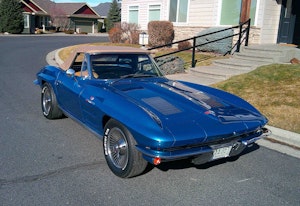
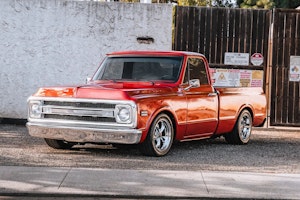
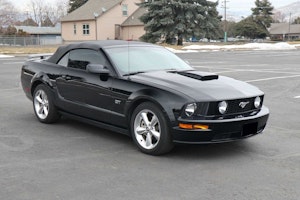
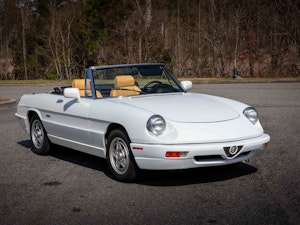
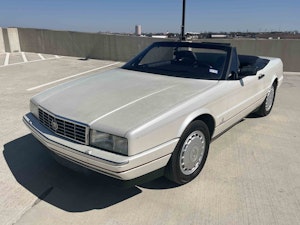
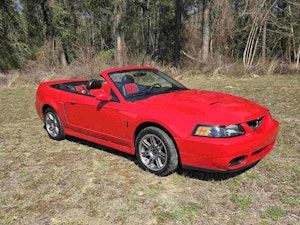
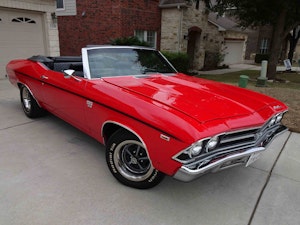
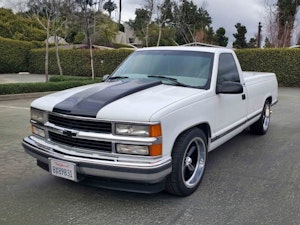











I have a couple of fond memories of the ’65 models.
I remember getting my dad to take me down to the Ford dealership to see the 1965 model year in the fall 1964. He was reluctant because he didn’t like dealing with the car salesman. Sure enough he went home with the sales paperwork drawn up by a salesman for a new Ford Custom 4 door sedan. He told the salesman he’d need my mother’s approval. I think that was his out. My dad’s only ever new car was a 1948 Chevy Fleetline or Fleetmaster.
The value in a Galaxie is the size of the engine, the type of body material and the number of doors.
If you have a two door large engine car they are of value. If it is a door small block or 352 not really much value. Of course these are the easiest to find as they sold more of them.
One more thing that skews their prices are the light weight cars with the aluminum bodies. I have a collector in Ohio here Don Snyder who has the largest collection of light weight cars of all brands but he has the most Fords. He has the firs light weight Galaxie drag cars till in race trim. He has more Thunderbolts than anyone including #1 Butch Leals car.
I had a 63 4 door and it was a good car. It was never worth much but these do make great affordable collector cars if you can find them rust free. So few left today as the rust ate them up.
I bought mine cheap from the wife of the original owner and sold it for more than I paid for it. It was all original including the exhaust and was never in the winters. I still had two rust holes in the trunk where the water from the tires hit. It was an easy fix.
While the ultra rare 427 R codes are the most valuable the 7 Liter is generally considered a 428 car and for what it is a better choice. The 427 was developed to compete on the track with the 421 Pontiac Super Duties that were being back doored out. When GM really finally pulled the plug Chrysler stepped up at the same time with the 426 so the program continued. Ford dealers were actually told to disuade buyers from the 427 because it was not a very user friendly option for the average buyer. Enter the 428 a much more street-able package. For a big heavy car that was meant as a cruiser from square one a much better fit. A 7 Liter convertible ( as shown ) would probably be my cost no object choice.A 68 Galaxy Sportsroof ( fastback ) would be wicked cool too. As a not as much alternative say a 72 two door. A good looking piece and those 390s with about 400 lb-fts year depending will pull you away from a stop light nicely and run forever.
back in the day the 66-67 full size galaxy michigan state police cars with 428 police interceptors at $500-800 each were a street racers dream. talk about horsepower per dollar. good times for low bucks. when you had enough fun, you could pull the running gear & get your money back & just scrap the rest of the car. they also had some 440/375 plymouths that were equally as much fun for minimal $$$.
I had a relative that desired a ’66 or ’67 Galaxie and asked me to help him find one. I’m not a Ford expert by any stretch, but I did my best. I finally located one that was in his price range. But although I thought it was certainly restorable (and he was fine with doing some modern aftermarket mods that would’ve made parts-sourcing easier), he thought it was too rough. After years of looking, he never ran across one that was “good and cheap”, so his dream was never realized (R.I.P. Cory).
On the other hand, while I was attempting to find what he wanted, I got the chance to look at and learn quite a bit about them, and I really came away with an appreciation of them. The ’65s are a bit too sharp and square for me, but a ’66 or ’67 catches my eye just about right. I often wish he’d taken that first one we looked at – it would’ve been restored and had lots of fun miles on it for he and his family.
Had a 66 ragtop Galaxy with the 390 and C-6 tranny in it. Nice car for my 2nd car as a 16 year old kid.
We had a neighbor that bought a new ’65 four door sedan, the cheapest version which I believe was called a “custom”. Just the base 6 cylinder and a 3 speed manual trans. This guy was cheap, really cheap-to the point of being dangerous. 8 or so years later I remember looking at it and rust had taken it’s toll. One of the front brake lines rusted enough that it would leak. Instead of replacing the brake line he just put a small vise grips on it to stop the leak. Wasn’t a temporary repair for him-he drove it like that for over a year!
When my wife and I were first married in 1969, we purchased her Mother’s white 1965 Ford Custom 4-door sedan for $400, the dealer trade-in offer, as a second car. Nicknamed “White Fang”, this plain Jane sedan had a V8 engine, automatic transmission, but little else. We drove it through thick and thin, replacing automatic transmission, brakes, exhaust and other aged components. By 1980, rust had taken full control. By then I had a company car and could also lease a car from the company for her to drive. I refused to be seen in Fang, but my wife insisted on saving money by not replacing Fang. Finally, one day, she called me at work to tell me the muffler had fallen off Fang and I would have to tow it home (about a mile). I was puzzled why the car would not run without the muffler. Arriving to where she had left the car, I found it was the gas tank, not the muffler, that had fallen off. I muscled the tank into the trunk and towed Fang home. A new pair of mounting straps, the tank was reinstalled and Fang was good to go, but I told her she could drive the car if she wanted, but not with “our” kids in it. So we sold Fang as is for $200; not bad losing $200 for over ten years of service.
I’ve noticed prices going up on these as well. Wonder how the prices are on the corporate twin ’66 Mercury S55 compared to the 7 Litre? 428, 345 hp & 462 ft-lb of torque
A very nice 7 Litre 4 Speed convertible just sold on BAT for $34,000……..looked like a great deal to me (and I’m a Chevrolet die hard)……https://bringatrailer.com/listing/1966-ford-galaxie-500-39/
Great looking and smooth riding. I think I like the ’65 and ’66 the best myself but that could change.
I own two 66’s, both 2-doors, a Galaxie 500 (240-6, 3-speed, front T-bird buckets, 2 owner with original Texas plates that the original owner bought to haul hay in[!]) and a Custom 500 that my dad bought new when he worked for Ford. While they both need restoration, I have fond memories of both, especially his car, which IDLED at 100 MPH! Great, comfortable, fast cars.
I had a 1965 LTD 2 door hardtop in Springtime Yellow with the 352 and auto tranny back in the late 80s. We took the family to Disneyland in the thing in June of 1988. That was cruising in style but without a/c.
I own a 1967 ford Galaxie 500 convertible. It has a turquoise exterior/interior and a black convertible top. In 1973 the oil embargo was going on, everyone was down sizing to smaller cars with better fuel economy. At the time I had a 1966 Mustang Convertible. An older lady was selling her 67 Ford convertible 390 C6 with 27,000 miles for $600. I bought it as a second vehicle and still own it today. Today it has 68,000 miles, the original top, interior and paint. The paint has showing its’ age, the paint is checking in areas but stills looks good from 10 feet. People tell me I should sell it but it is a $600 investment that not only keeps on going up and the joy it still gives me is priceless. I sold the Mustang in 1975 to buy a Porches. The Porches is long gone. 8 years ago I bought a black rust free 1966 Mustang GT Convertible from California just like what I had in high school and collage. Both cars bring back memories of the 60’s and 70’s. I do not see myself ever selling them, I smile every time I drive them or look at them.
I have a 66Custom 500 2 door I’m reassembling. The coil spring suspension makes the ride very smooth and comfortable. It has a 240 6 cylinder (The Buzzin Half Dozen) with a C4.
The 1960s-70s inline 6-cyl 240 Ford motor is NOT the ‘descendent’ of the 1990s 300 cu in Ford Motor; that’s backwards. The 300 cu in truck motor is descended FROM the 240 motor of the 1960s.